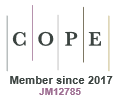Just Accepted
This article has been peer reviewed and accepted for publication. It is in production and has not been edited, so may differ from the final published form.
Conceptualising urgent care: Taxonomy, terminology, and relationships with primary and emergency care
Abstract
Objective: To develop a taxonomy of urgent care service models and their relationships within healthcare systems through concept mapping, addressing inconsistent terminology and service classifications.. Methods: This descriptive study employed an iterative mapping methodology to analyse and categorise urgent care services. Data collection involved literature describing urgent care models across international healthcare systems, focusing on terminology, operational characteristics, and integration points with primary and emergency care. This was complemented by an Australian Urgent Care Model Analysis, a comparative review of publicly declared service characteristics and clinical scopes across Australian urgent care models, coded to ICD-10 and presented in tabular form. Results: The concept map presents a taxonomy of healthcare services across three distinct care pathways based on condition acuity: primary care for non-urgent needs, urgent care for non-life-threatening conditions requiring prompt, non-scheduled treatment, and emergency care for acute emergencies. The map establishes standardised nomenclature, including intersectoral areas such as co-located facilities and Nurse Practitioner walk-in services. Supplementary analysis highlights scope variation between models, particularly differences in procedural capability, diagnostics access, and mental health response. These findings inform current Australian policy directions, particularly the Medicare Urgent Care Clinics rollout. Conclusions: This concept map provides a framework for examining urgent care services within the broader healthcare landscape. Alongside a comparative analysis of Australian models, it supports systematic investigation, highlights variation in service scope and design, and informs planning, integration, and policy development across diverse urgent care settings.
AH25028 Accepted 01 July 2025
© CSIRO 2025



